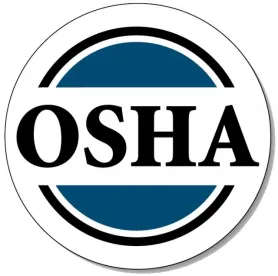The Occupational Safety and Health Administration has identified seven proposals the agency hopes to release as final rules before the end of the year, while the Mine Safety and Health Administration, its sister agency within the Department of Labor, plans to issue two final rules in 2016.
In DOL’s semi-annual regulatory agenda, issued in May, OSHA indicated that its long-developing rule on walking working surfaces and personal fall protection systems for general industry will come out in August. OSHA has been working on this rule since 1990, releasing two proposals since then. The agency said the second proposed rule, issued in 2010, reflects current information on slip, trip, and fall prevention and is consistent with other OSHA standards.
October has been set for issuance of a rule to amend OSHA’s recordkeeping regulations to clarify employers’ ongoing duty to make and maintain accurate records of work-related injuries and illnesses. OSHA said the rule is needed after a 2012 decision (AKM LLC d/b/a Volks Constructors v. Secretary of Labor, 675 F.3d 752 (D.C. Cir. 2012)) in which an appeals court held that OSHA could not issue a citation for an employer’s failure to record an employee injury on a log after the expiration of the six-month statute of limitations contained in the law.
The agency said it would issue a final rule in December to amend internal procedures that are followed by OSHA personnel when obtaining and using personally-identifiable employee medical information (under 29 CFR 1913.10). Also expected in December is a direct final rule to expand exemptions affecting railroad roadway work in OSHA’s cranes and derricks in construction standard. Three anti-retaliation final rules are set for release in the fall.
In response to a court decision, MSHA said it would release a final rule in July based on comments received regarding training for miners charged with deploying and using refuge alternatives in underground coal mines. Refuge alternatives provide shelter for miners in an emergency. The mine safety agency set August for release of a final rule to mandate proximity detection to protect underground coal miners from pinning, crushing, or striking hazards. The technology uses sensors to shut down moving equipment automatically when miners get too close.
Interestingly, MSHA has left off its agenda altogether a controversial proposed rule to revise its civil penalty procedures. (The agency had said in its December 2015 agenda that it would release a final rule on the subject in March 2016.) Critics say the rule will increase monetary penalties for alleged safety and health violations at a time when the mining industry is making significant improvement, having achieved its safest year ever in 2015. In addition, certain provisions of the rule could restrict the Federal Mine Safety and Health Review Commission’s ability to set final penalty amounts independently.
OSHA has scheduled four proposed rules for release before its next agenda is published at the end of the year. They are: (1) a quantitative fit test protocol amendment to the respiratory protection standard in June; (2) standards improvement project IV in July; (3) amendments to the cranes and derricks in construction standard in October; and (4) crane operator qualification in construction in December. OSHA issued a proposed rule on beryllium in August 2015, but did not set a date for release of a final rule in the latest agenda.
MSHA said it would release a proposed rule in June on examining working places in metal/nonmetal mines and a respirable crystalline silica rule in September. The examination rule is under White House review.
OSHA has listed no fewer than 19 potential regulations in the pre-rule information-gathering stage. MSHA has identified three: (1) refuge alternatives for underground coal mines, (2) improving the health and safety of miners and preventing accidents in underground coal mines, (3) and underground miners’ exposure to diesel exhaust. The diesel exhaust pre-rule was sent to the White House for review on May 13.




 />i
/>i
